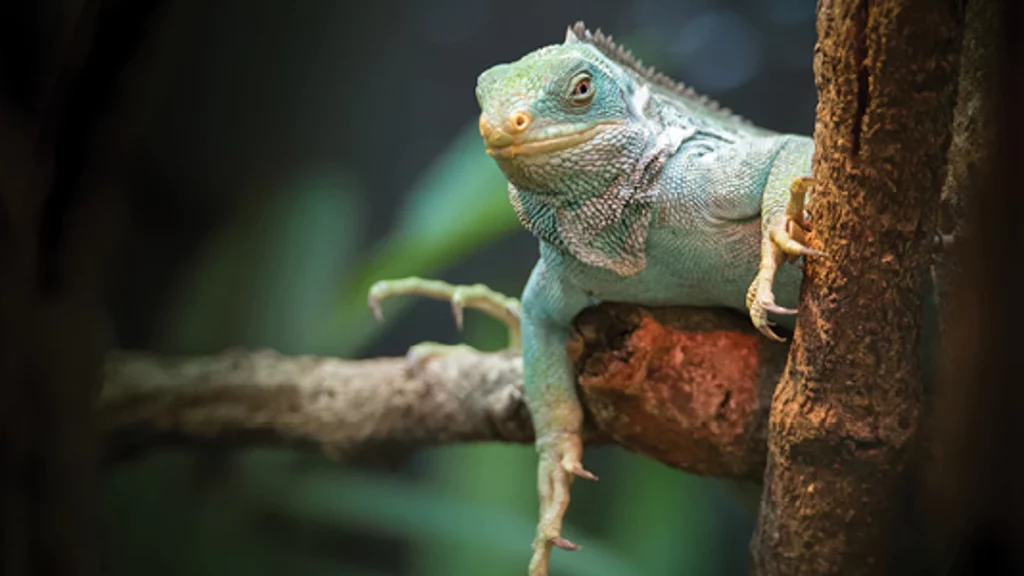| Where | View on Map | ||
| Adopt | I Would like to adopt an animal | ||
Australia Zoo is thrilled to introduce you to the critically endangered Fijian crested iguana! These spectacular reptiles can be spotted exploring their home in our very own Robert’s Reptile House.
The crested iguana is endemic to Fiji. They were originally found throughout 14 Fijian islands, but, today are restricted to just three! Alarmingly, 98% of all remaining individuals (less than 6,000) are living on just one island.
These gorgeous reptiles prefer to live amongst dry forests and in coastal areas and will spend the majority of their time in the trees, rarely coming down to the ground. They perfectly camouflage amongst the trees with their vibrant, emerald green and black-outlined, white stripes. Crikey, they are beautiful! Crested iguanas are herbivorous, feeding on fruits, leaves, flowers and shoots.
Steve and Terri dedicated much of their time researching these critically endangered reptiles. They carried out surveys on several Fijian islands and discovered previously unknown populations of the Fijian crested iguana! To safeguard the tiny, remaining wild population, zoos across Australia and New Zealand work together to ensure an ongoing breeding population. Australia Zoo is equipped with state-of-the-art breeding facilities to assist with this insurance population. If called upon, we will be ready to assist with a re-introduction into the wild. Woo-hoo!
The most immediate threat to Fijian crested iguanas is the introduction and suffer from feral cats and goats. Bush fires and habitat loss are also a contributing factor to their current critically endangered status.





